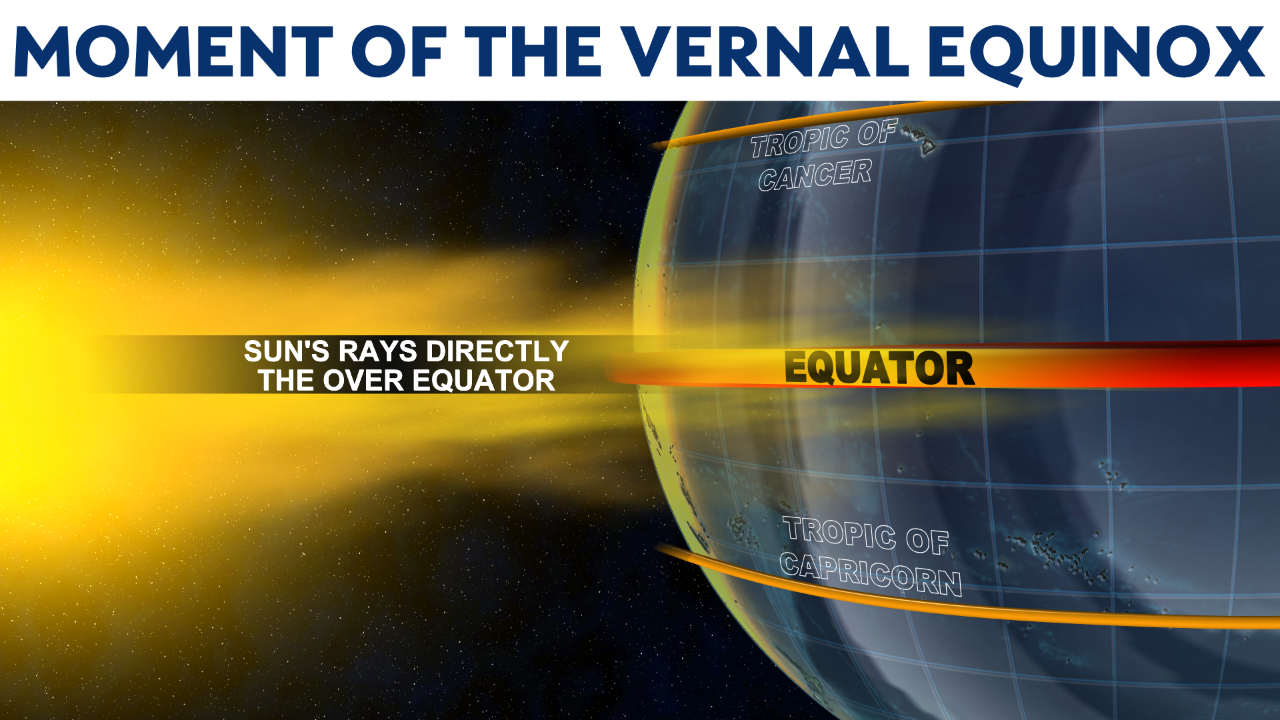I believe I can reasonably speak for most by saying, I’m ready for spring’s arrival! Being stuck in the house watching a cold rain fall quickly takes a toll on one’s sanity.
Oh, and dealing with a pandemic doesn’t help either. One cure for this ailment is the smell of flowers, the sound of birds singing, and warm sunshine… spring!
The spring season can be defined in two ways. Meteorologists define spring as March, April, and May. For the rest, astronomical spring arrives on a particular date, at a particular time every March.
This year that moment is March 20 at 5:37 a.m. in the Northern Hemisphere. That precise moment is called the vernal equinox.
The word equinox is Latin meaning “equal night” when the length of the day and night is nearly equal. So what does that mean, and what exactly happens at that time?
The vernal equinox is the exact time when the sun’s direct rays pass directly over the Earth’s equator. This also happens in September during the autumnal equinox, the astronomical time when autumn begins.
The spinning Earth is tilted on its axis slightly more than 23 degrees. At the same time, the Earth is revolving around the sun, and one complete revolution equals a year.

Due to the Earth’s tilt, half of the year the Northern Hemisphere is titled away from the sun and the other half toward the sun. Thus, the sun’s direct rays pass the equator south to north and back north to south of the equator.
When the sun’s direct rays travel to the most northern extent on the globe, that moment is called the summer solstice and the opposite is true for the winter solstice. This is also the time when the days are the longest and nights are the shortest, with the reverse being the case during the winter solstice.

So logically, you would think at the time of the vernal equinox the daytime and nighttime would equal 12 hours. However, that is not exactly the case, and here are a couple of reasons why.
The first is because the Earth has an atmosphere and this can affect how light reacts. When light passes at an angle through one medium of a certain density and moves into another of greater density it causes the light waves to bend.
This is what happens when sunlight enters into the Earth’s atmosphere, the light waves bend which is known as astronomical refraction.
What this does is pretty amazing. When you look at a sunrise or sunset, there are moments when you can see the sun a few minutes before it has risen above the horizon at sunrise and after it has dipped below the horizon at sunset.
This phenomenon causes the day to be slightly longer than the night during the equinox by a few minutes.
The second reason is how we define the exact time of sunrise and sunset. Sunrise and sunset are defined at the exact moment when the upper edge of the sun’s disk touches the horizon.
Therefore, it can take several minutes for the sun to fully set which makes the daytime slightly longer than the night.

So while most of us are ready to say goodbye to winter, I would imagine many like me did not get out of bed at 5:37 a.m. to celebrate the vernal equinox. Then again, given what all of us have had to endure lately, I wouldn't fault you if you did!



